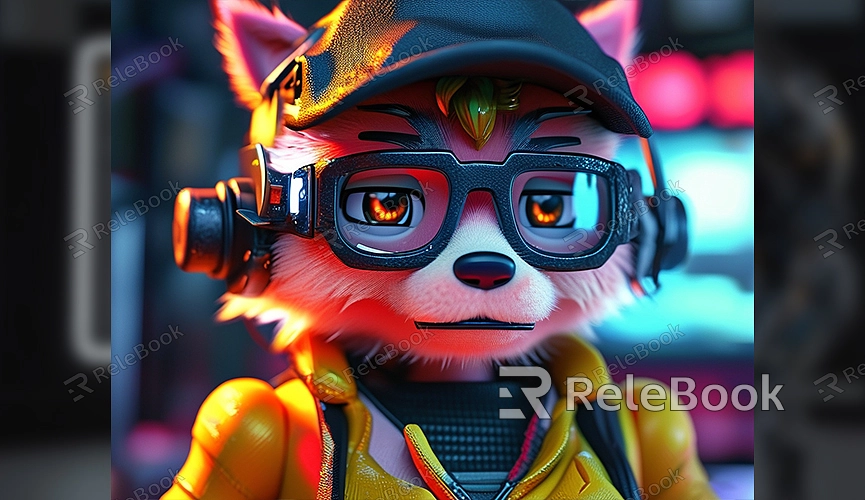How to Render a Roblox Character in Blender 2019
Roblox is a popular online platform that allows users to create and share various 3D games and virtual worlds. With its growing popularity, many users wish to render their in-game characters into high-quality images or animations. Blender 2019 is a powerful, free 3D modeling and rendering software that is perfect for rendering Roblox characters. This article will detail the process of rendering a Roblox character in Blender 2019.
Prepare the Roblox Character Model
1. Export the Character Model: First, you need to export the character model you want to render from Roblox. Roblox Studio allows you to export the character as an FBX file, which Blender can recognize. In Roblox Studio, select the character model, right-click, choose "Export," and save it as an FBX file.
2. Import into Blender: Open Blender 2019, select “File” from the menu, then “Import,” and choose the “FBX” format. Find the character model file you just exported and click “Import.” This will bring the Roblox character model into Blender.

Adjust and Optimize the Model
1. Check the Model Scale: After importing the model, you may need to adjust its scale. In Blender, you can use the “Scale” tool to adjust the size of the model to meet your needs. Ensure the character model’s proportions and details match your expectations.
2. Fix the Model’s Mesh: Sometimes, the imported model may have some mesh issues. You can enter Edit Mode to check and fix the model. For example, repair broken faces, adjust vertex positions, and merge duplicate vertices.
3. Optimize the Model’s Materials: The materials in Roblox might not perfectly align with Blender’s requirements. You may need to reset the materials, including color, glossiness, and transparency. In the “Material” panel, add appropriate materials to the model and adjust them to achieve the desired effect.
Set Up the Scene and Lighting
1. Add Lighting: To make the character model more three-dimensional, you need to add appropriate lighting to the Blender scene. Blender offers various light types, including point light, spotlight, and area light. Choose the suitable light type according to your needs, and adjust its position and intensity to simulate natural lighting effects.
2. Set Up the Camera: Choose an appropriate camera angle to showcase your character model. In Blender, you can adjust the camera’s position and angle in the camera view to ensure the character model is displayed optimally in the render.
3. Adjust the Scene Background: If you want to add a background to the character model, you can create a simple background in Blender or use an HDRI image as the environment background. HDRI images provide natural lighting and background effects, making the rendered image more realistic.
Render Settings
1. Choose the Render Engine: Blender 2019 offers multiple render engines, including Cycles and Eevee. The Cycles render engine is suitable for high-quality ray tracing rendering, while Eevee is ideal for real-time rendering and quick previews. Choose the appropriate render engine based on your needs.
2. Adjust Render Parameters: In the “Render” panel, set the render resolution, sampling rate, and other render parameters. If you use the Cycles engine, increasing the sampling rate can improve the image quality but also increase the render time. If using the Eevee engine, you can adjust the real-time rendering settings for quick results.
3. Render the Image: Once all parameters are set, click the “Render” button to start the rendering process. Blender will generate the final image of the character model based on your settings. The rendering process may take some time, depending on the model’s complexity and render settings.
Post-Processing
1. Image Adjustments: After rendering is complete, you can use Blender’s built-in “Compositor” for post-processing. Adjust the brightness, contrast, and color balance to further enhance the image quality.
2. Save the Image: After rendering and post-processing, save the image file. Choose an appropriate file format (such as PNG or JPEG) and save it to your specified location.
Rendering a Roblox character model in Blender 2019 involves several steps, from importing the model to adjusting materials, setting up lighting, choosing the render engine, and performing post-processing. Each step is crucial to ensure the final rendered image meets your expectations. Mastering these techniques will help you create high-quality character renderings, adding a highlight to your project.
If you need high-quality 3D textures, HDRIs, or 3D model downloads for creating models and virtual scenes, you can download them from Relebook. After downloading, you can directly import the textures and 3D models into your projects for use.

